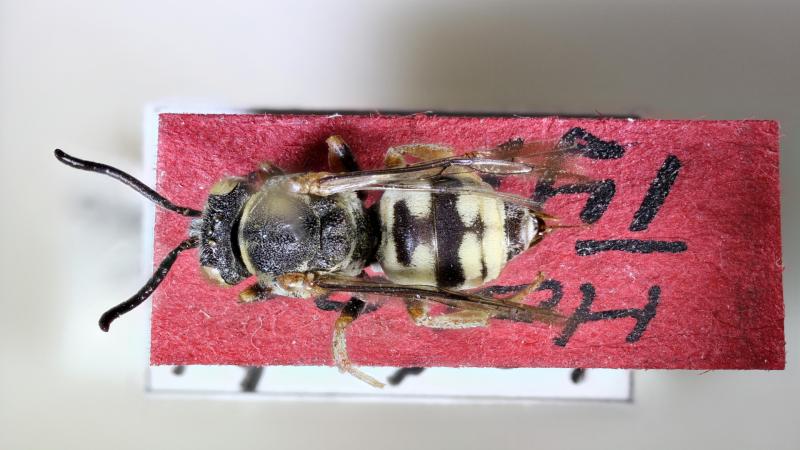
About three decades ago, a German bee specialist named Klaus Warncke reported a new species of bee from the beautiful landscape of Ladakh, India. He studied the morphology of this small bee, belonging to the genus Epeolus, and named it Epeolus ladakhensis, after Ladakh. Unfortunately, after his death in 1993, the descriptions about this species remained unpublished.
Things took a turn when Dr Petr Bogusch, a researcher at the University of Hradec Králové, Czech Republic, noticed the stored specimens of the bee and handwritten descriptions from Klaus Warncke, at a museum in Austria. Enthralled, he decided to study the specimens and subsequently published the description of a new cuckoo bee species in the journal Oriental Insects.
“I discovered the specimens in the collection of Biologiezentrum in Linz, Austria. Both were placed in the collection of Klaus Warncke and labelled by him, around the year 1990,” recollects Dr Bogusch.
Cuckoo bees, like their namesake birds, take over the nests of other bees for laying their eggs. The larvae that hatch out of the eggs feed on the leftover food of the host. The cuckoo bees constitute 15% of the bees worldwide. While some invade the nests of only a particular species of bees, others are known to invade roosting places of different species when the hosts die. The genus Epeolus has around 100 species distributed across the world.
Dr Bogusch has described Epeolus ladakhensis based on a female specimen as there were no male specimens found. The female bees are about 7.2 mm long with reddish coloured mandibles or ‘jaws’ on either side of its mouth. The forehead is black with sparsely spread whitish fine hairs. The pair of antennae present on their heads are mostly dark. Their wings are slightly brownish with dark brown veins, and the legs are primarily reddish or brown.
The study found a few differences in the appearance of E. ladakhensis and a closely related Palaearctic species, Epeolus tarsalis. The former has a conical shaped metasoma, or the rear end, which is also more reddish. Besides, E. ladakhensis has a prominent yellowish, soft hair all over the body. Full -formed bands, made by these hairs on the upper body, distinguishes the new species from its European relative E. tarsalis, which has broken bands. The upper lip or the “labrum” is straighter in E. ladakhensis than in the E. tarsalis. Interestingly, E. ladakhensis appears to be different from other Indian species of this genus.
Currently, E. ladakhensis is known to be found only in Ladakh, and the host species they invade and the plants from where they collect nectar, are unknown. Unlike other discoveries of new species, the cuckoo bees reported in this study were hidden in museum aisles rather than in thick jungles. Interestingly, there have been quite a few discoveries of cuckoo bee species like this! Perhaps, careful observation of museum collections might add more members to the list of cuckoo bees.





